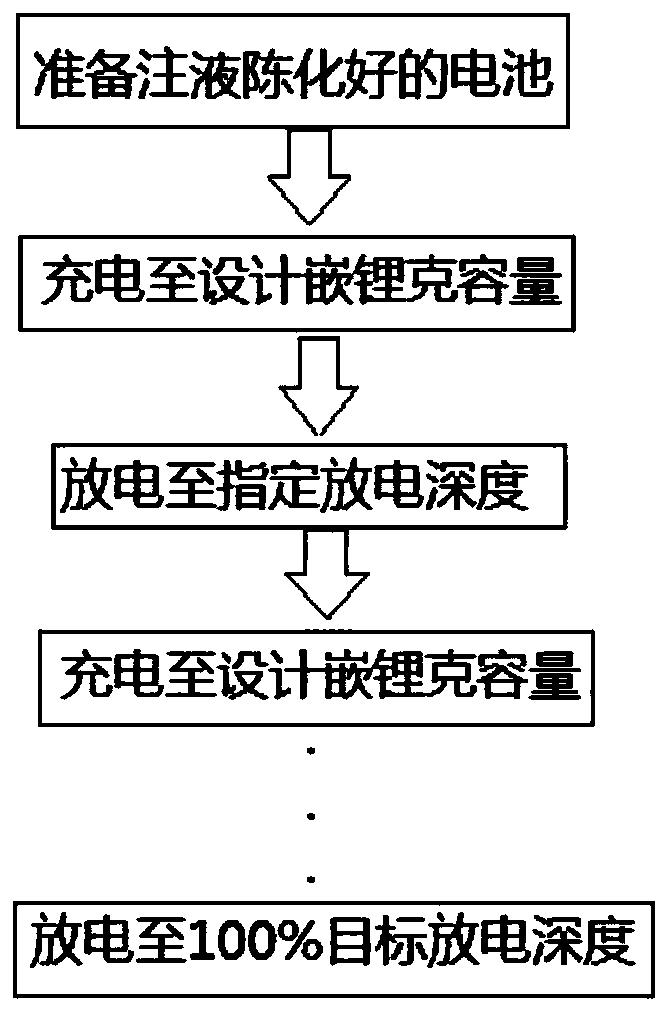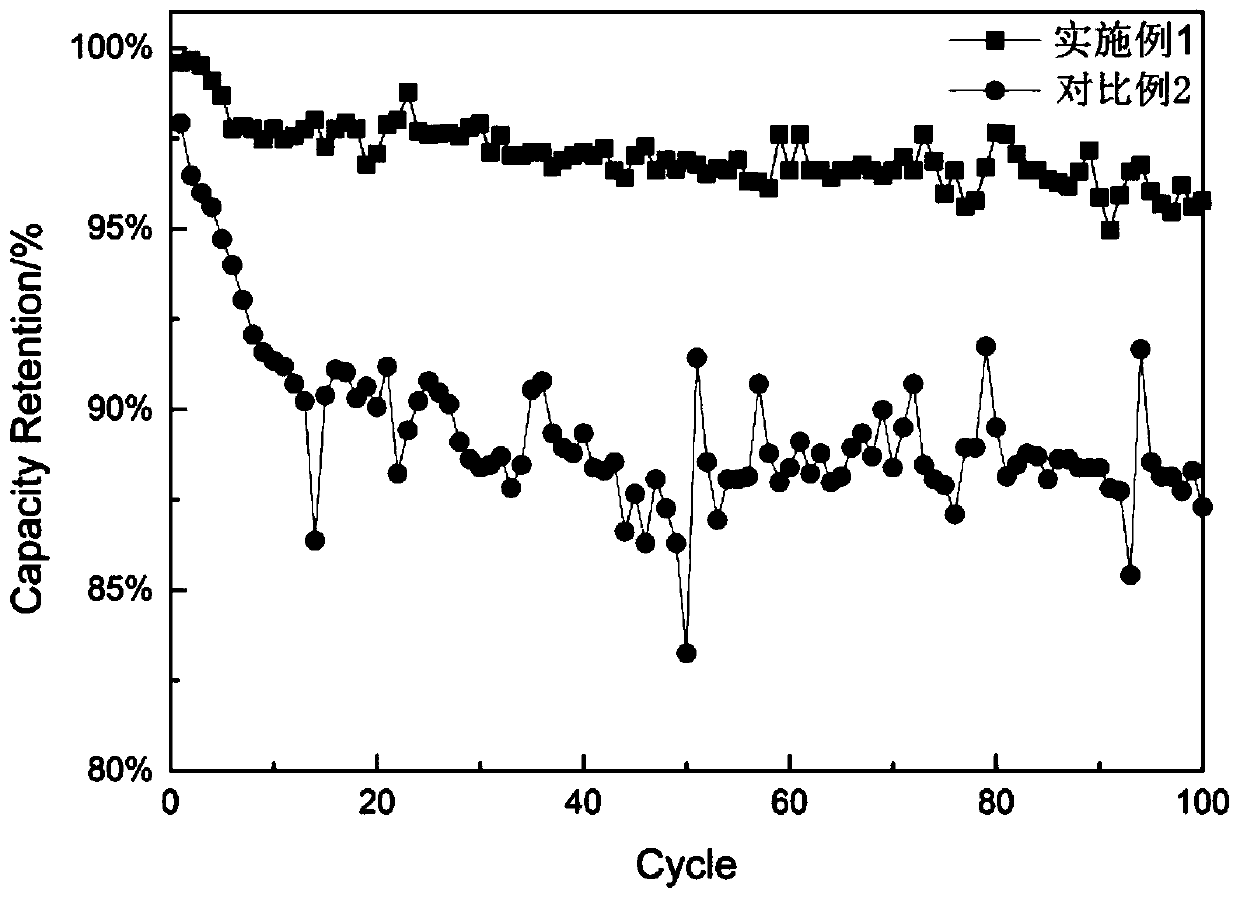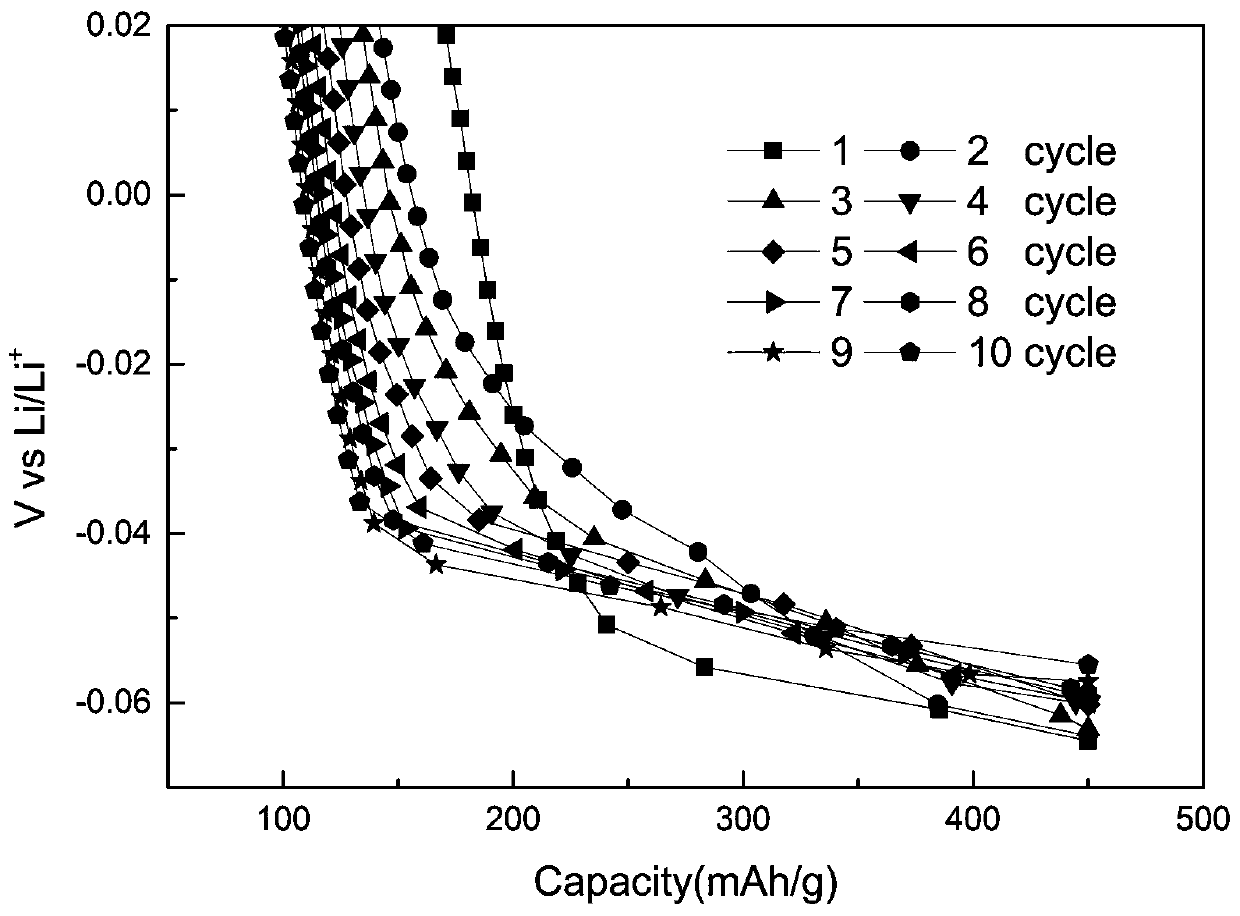A kind of formation method of hard carbon negative electrode material lithium ion battery
A technology of lithium-ion batteries and formation methods, applied in the manufacture of electrolyte batteries, non-aqueous electrolyte batteries, secondary battery repair/maintenance, etc., can solve the risk of lithium analysis, the existence of potential safety hazards, and the impact on the cycle of hard carbon negative electrode materials lithium-ion batteries Stability and other issues, to achieve the effect of reducing the risk of lithium analysis, improving the lithium potential platform, and excellent cycle stability
- Summary
- Abstract
- Description
- Claims
- Application Information
AI Technical Summary
Problems solved by technology
Method used
Image
Examples
preparation example Construction
[0026] In the embodiment of the present invention, the preparation method of the liquid-injected and aged battery preferably includes: according to the manufacturing process of the conventional button battery, the metal lithium sheet is used as the counter electrode, that is, the negative electrode in the button battery.
[0027] According to the conventional button battery manufacturing process, the hard carbon negative electrode material, conductive agent SP, and binder SBR / CMC are prepared into a slurry, which is evenly and continuously coated on the copper foil, dried and rolled to form a positive electrode. Pole piece: The mass ratio of the hard carbon, SP, SBR and CMC is preferably 95:2:2:1.
[0028] The positive and negative pole pieces, electrolyte and separator were assembled into a button battery, and then aged at 25°C for 24 hours to obtain a liquid-injected aged battery.
[0029] In the present invention, the battery that has been aged by liquid injection is subjec...
Embodiment 1
[0037] A method for the formation of a hard carbon negative electrode material lithium-ion battery, performing formation treatment on the battery that has been aged by liquid injection; the formation temperature is 25°C; the designed lithium intercalation gram capacity (hereinafter referred to as SOC) is 450mAh / g, The target depth of discharge (hereinafter referred to as DOD) is 450mAh / g;
[0038] The process of the chemical conversion treatment includes:
[0039] Intercalate lithium at a rate of 0.2C to 100% SOC in the first week, and then delithiate at a rate of 0.2C to 55% DOD;
[0040] In the second week, intercalate lithium at a rate of 0.2C to 100% SOC, and then delithiate at a rate of 0.2C to 60% DOD;
[0041] In the third week, intercalate lithium at a rate of 0.2C to 100% SOC, and then delithiate at a rate of 0.2C to 65% DOD;
[0042] In the fourth week, intercalate lithium at a rate of 0.2C to 100% SOC, and then delithiate at a rate of 0.2C to 70% DOD;
[0043] In...
PUM
 Login to View More
Login to View More Abstract
Description
Claims
Application Information
 Login to View More
Login to View More - R&D
- Intellectual Property
- Life Sciences
- Materials
- Tech Scout
- Unparalleled Data Quality
- Higher Quality Content
- 60% Fewer Hallucinations
Browse by: Latest US Patents, China's latest patents, Technical Efficacy Thesaurus, Application Domain, Technology Topic, Popular Technical Reports.
© 2025 PatSnap. All rights reserved.Legal|Privacy policy|Modern Slavery Act Transparency Statement|Sitemap|About US| Contact US: help@patsnap.com



